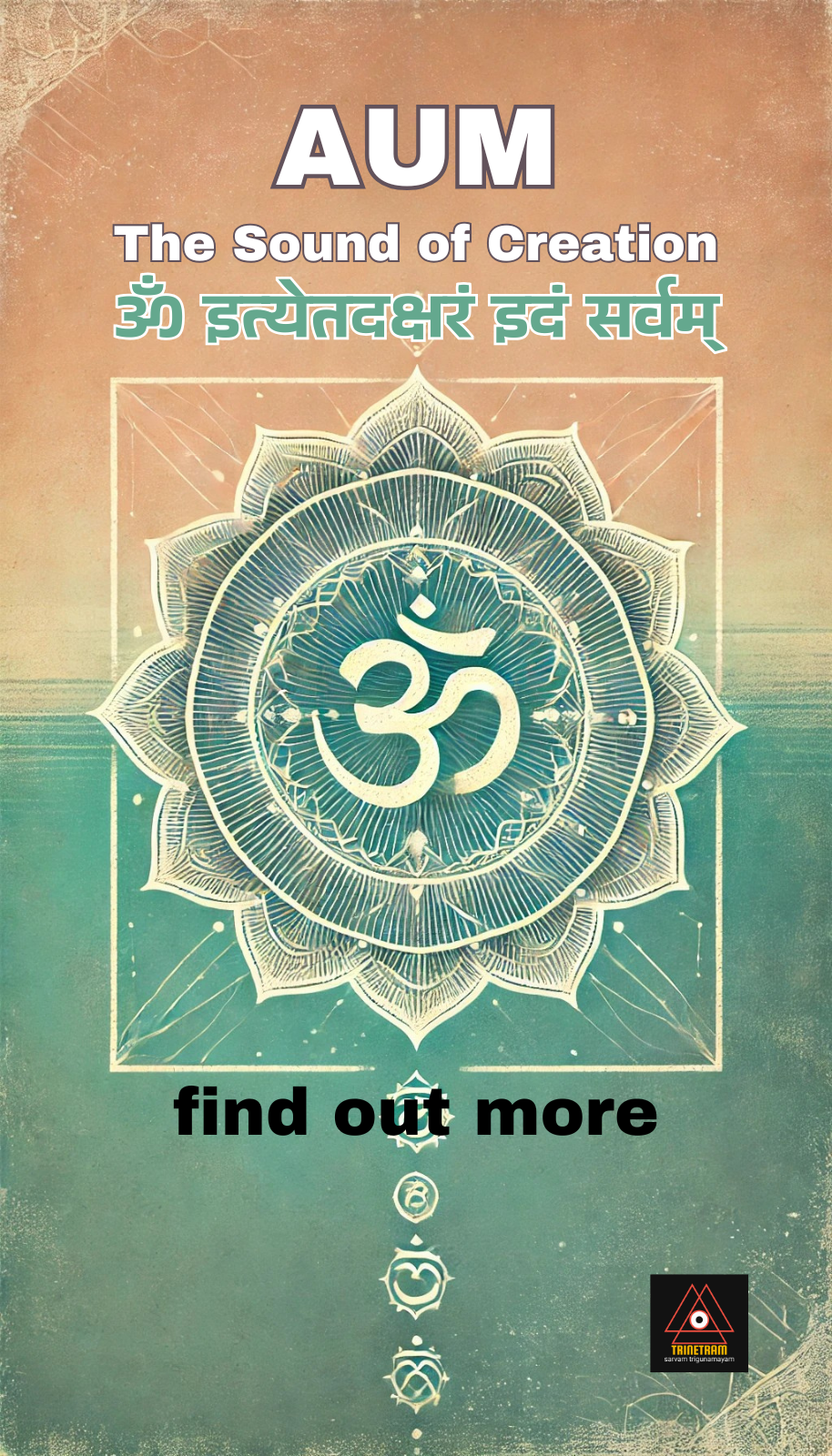
Welcome to Trinetram.
Understanding AUM
AUM (ओं) is not just a sound; it is the primordial vibration from which all creation emerges. Revered in ancient Indian scriptures, AUM is considered the sound of creation. It holds profound spiritual, scientific, and practical significance, offering timeless wisdom and harmony in modern life.
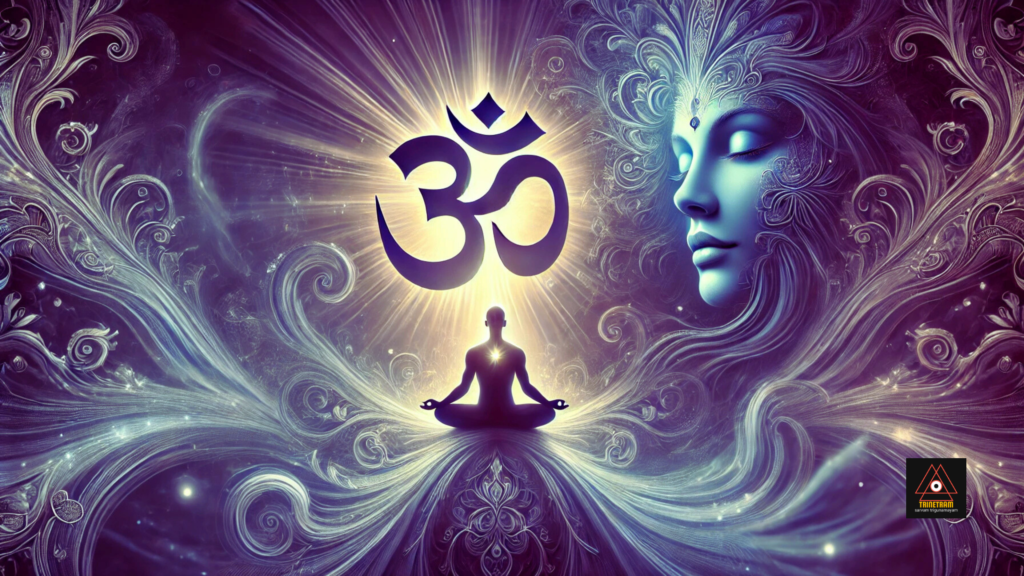
Origin of AUM in Ancient Scriptures
The concept of AUM finds its roots in the Vedas and Upanishads. The Mandukya Upanishad declares:
“ॐ इत्येतदक्षरं इदं सर्वम् |” (Om Ityetadakṣaraṁ Idaṁ Sarvam ) Means, “AUM, this syllable, is all that exists.”
The Rigveda, one of the oldest texts, mentions AUM as the cosmic sound present at the time of creation:
“प्रणवो धनुः शरो ह्यात्मा ब्रह्म तल्लक्ष्यमुच्यते।” (Praṇavo Dhanuḥ Śaro Hyātmā Brahma Tallakṣyamucyate) Means, “AUM is the bow, the soul is the arrow, and Brahman is the target.”
The sound represents the triad of existence—creation (A), preservation (U), and dissolution (M) correlating with Brahma, Vishnu and Maheshwara—symbolizing the entire cycle of life.
How Matter Emerged from AUM
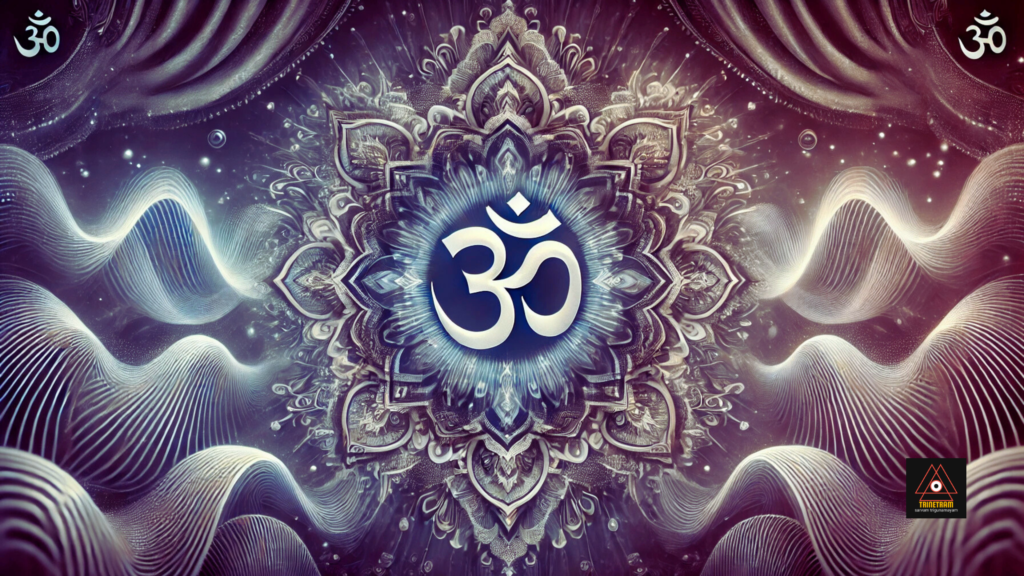
Modern physics accepts the idea that vibrations and frequencies form the building blocks of matter. Ancient wisdom put forward that AUM is the vibratory force that first manifested creation. Before the utterance of AUM, there was nothingness, referred to as “Shunyata” in Sanskrit. This cosmic void held infinite potential, which transformed into matter and energy when AUM, the sound of creation, formed from the Shunyata.
AUM represents the primordial sound wave—a unifying vibration that became the universe. For example, the Big Bang theory aligns conceptually with this ancient understanding, suggesting that the universe began with an explosion that sent vibrations rippling through space.
What Existed Before AUM?
Before AUM, the universe existed in an unmanifest state—a formless, infinite, and timeless reality. Known as “Brahman” in Hindu philosophy, this state goes beyond duality. AUM became the bridge between the unmanifest and manifest realms, bringing creation into existence and giving structure to chaos. AUM emerges from Shunyata—the state of nothingness. From infinite time, this void transforms as vibrations take form, bringing order to chaos. These vibrations harmonize into the three fundamental syllables: A, U, and M, representing the essence of creation, preservation, and dissolution. These three syllables—AUM—gave rise to matter over countless eons. From this matter, water emerged, and from water, life was born in the form of unicellular organisms. Over time, these simple life forms evolved into complex multicellular organisms, symbolizing the dynamic progression of creation.
The Three Syllables: A, U, M and Their Importance
AUM is composed of three syllables: A, U, and M, each representing a unique aspect of existence and consciousness:
- A (Ah):
- Represents creation (Brahma) and the waking state (Jagrat).
- It symbolizes the physical world and material existence.
- Importance: Chanting “A” activates the lower part of the body, grounding and energizing the physical self.
- U (Oo):
- Represents preservation (Vishnu) and the dream state (Swapna).
- It bridges the conscious and subconscious mind.
- Importance: Chanting “U” resonates in the chest, promoting balance and harmony.
- M (Mm):
- Represents dissolution (Shiva) and the deep sleep state (Sushupti).
- It connects the individual to the universal consciousness.
- Importance: Chanting “M” vibrates in the head, creating a calming effect and encourages self analysis.
Together, the three sounds embody the entirety of existence, encompassing all states of consciousness. The silence following AUM represents the fourth state (Turiya), a state of pure awareness and unity.
AUM and Ida, Pingala, Sushumna Nadis
In yogic philosophy, the Ida, Pingala, and Sushumna nadis are vital energy channels within the human body. These nadis correlate with the principles of AUM, aligning physical, mental, and spiritual energy.
- Pingala Nadi:
- Represents the sun’s energy and governs the right side of the body.
- Associated with activity and dynamism, it corresponds to the sound “A” in AUM, symbolizing creation and vitality.
- Sushumna Nadi:
- Runs along the spine and serves as the central channel of spiritual energy.
- It integrates the energies of Ida and Pingala, aligning with the sound “U” in AUM, which bridges creation and dissolution.
- Ida Nadi:
- Represents the moon’s energy and governs the left side of the body.
- Associated with calmness and introspection, it aligns with the sound “M” in AUM, representing dissolution and inner peace.
By chanting AUM, one activates and balances these three nadis, harmonizing the physical, mental, and spiritual aspects of existence. This alignment fosters heightened awareness, inner peace, and spiritual awakening.
Importance of AUM in Balancing the Universe
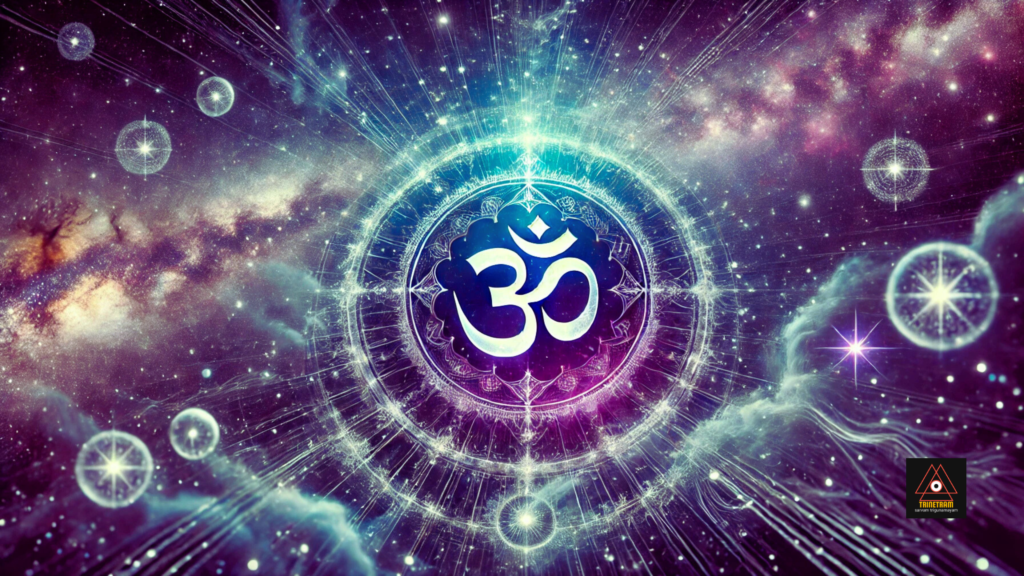
AUM is often referred to as “Nada Brahma,” or the sound of God. It maintains universal harmony by:
- Balancing Energies: AUM aligns the cosmic energies of creation, preservation, and dissolution.
- Resonating Frequencies: The vibration of AUM (at approximately 136.1 Hz) matches the frequency of the Earth’s rotation around the Sun, signifying harmony between the individual and the cosmos.
- Spiritual Unity: Chanting AUM fosters a connection with the divine consciousness, promoting unity and peace.
Importance of AUM in Everyday Life
AUM is not confined to spiritual texts; its relevance extends to daily practices:
- Meditation: Chanting AUM helps calm the mind, reduce stress, and enhance focus.
- Health: The vibrations stimulate the vagus nerve, improving cardiovascular health and emotional well-being.
- Yoga: AUM is central to yogic practices, aligning the body, mind, and spirit.
For example, a student preparing for exams might chant AUM to improve focus and clarity, while a working professional can use it for stress relief.
How to Meditate on AUM and Its Frequencies
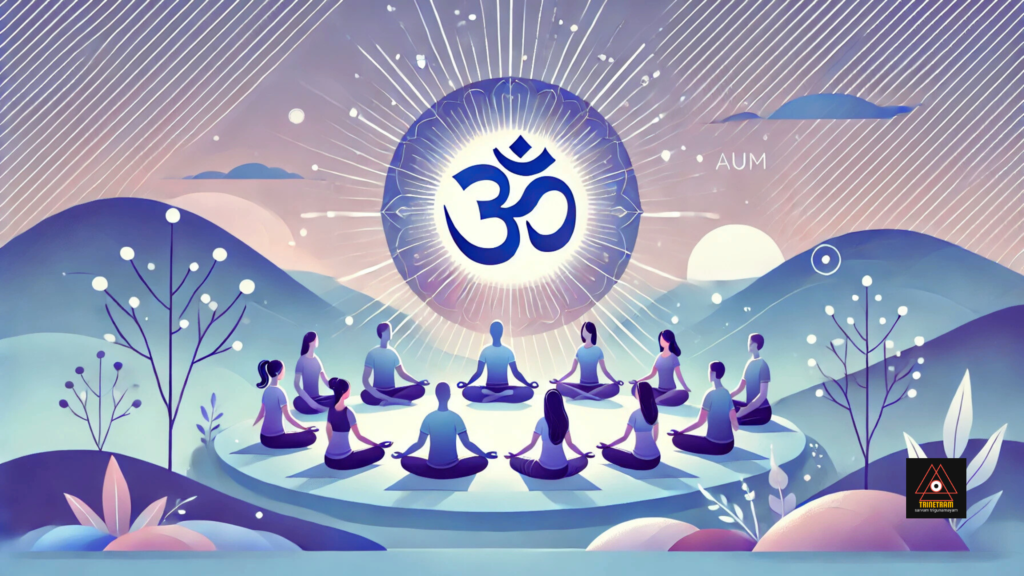
- Prepare Your Space: Find a quiet place where you won’t be disturbed.
- Sit Comfortably: Sit in a cross-legged position or on a chair with a straight back.
- Breathe Deeply: Take a few deep breaths to relax your body and mind.
- Chant AUM: Inhale deeply and chant “AUM” during the exhale. Break it into its components: A-U-M, letting each part resonate within.
- Focus on the Vibration: Feel the sound vibrating through your body, particularly in the chest and head.
- Repeat: Chant for 5-40 minutes or longer, depending on your comfort.
AUM’s Importance in Modern Life
In today’s fast-paced world, the practice of AUM offers solace and grounding. Modern applications include:
- Sound Therapy: AUM’s frequency is used in sound healing sessions to alleviate stress and anxiety.
- Corporate Wellness: Companies encourage chanting AUM in mindfulness programs to enhance productivity and reduce burnout.
- Scientific Research: Studies show that chanting AUM activates areas of the brain associated with relaxation and emotional balance.
Conclusion
AUM is more than a sound; it is the foundation of existence, creator of matter, embodying the infinite and the finite. AUM is a priceless gift to humanity, offered by saints who dedicated hundreds of years to its discovery. Let us embrace this sacred sound in our lives to reconnect with our true selves and rediscover who we really are.
You don’t need money, you don’t need to undergo physical exertion, and you don’t need to study the Vedas to practice this. All you need is a few moments of quality time to chant AUM in rhythm with your breath—simple yet profoundly transformative.
Begin your journey with AUM, and may it bring peace, harmony, and a deeper understanding of life into your existence.
As the Chandogya Upanishad proclaims:
“ॐ इत्यूद्गीथं उपासीत। ॐ इति ह्युद्गीथस्य साधुतमम्।” (“Om Ityūdgīthaṁ Upāsīta | Om Iti Hyudgīthasya Sādhutamam |”) Means, “Meditate upon AUM, for it is the best support for liberation.”
We will explore Meditation: A Tool to Connect with Higher Dimensions in our upcoming blog. Until then, stay tuned to trinetramyc.com! 🌈
We would love to hear your valuable thoughts and insights to help us deepen this exploration.
Thank you, Team Trinetram 🙏
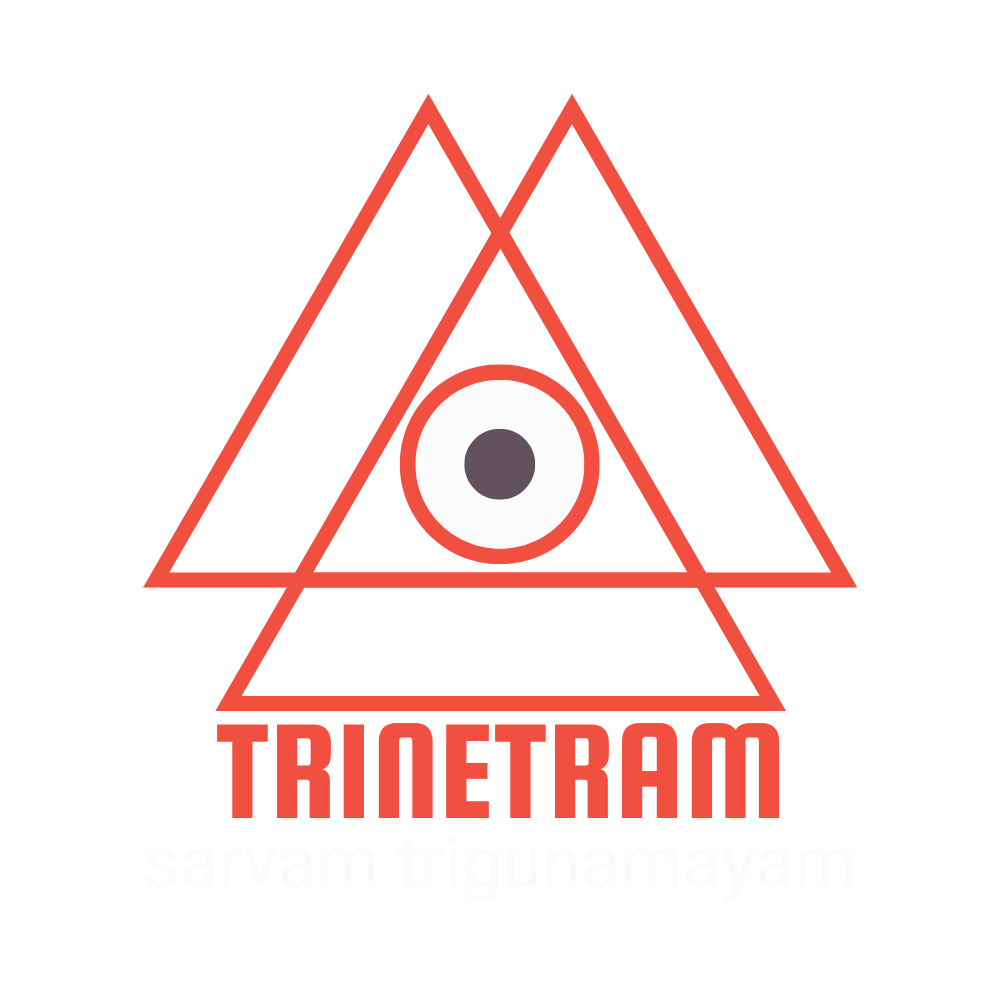
Leave a Reply